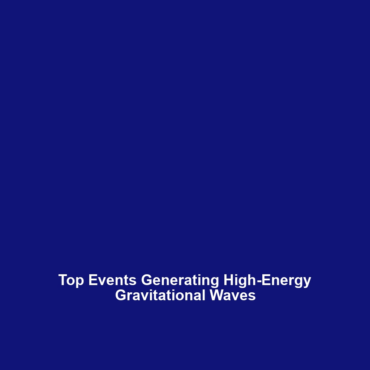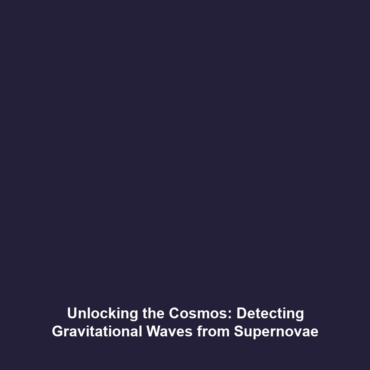Examples of Events Producing High-Energy Gravitational Waves
Introduction
Gravitational waves are ripples in spacetime caused by some of the most energetic events in the universe. Among these, black hole mergers represent a key phenomenon, significantly contributing to our understanding of gravitational waves. These mergers occur when two black holes spiral into one another and collapse. The resulting gravitational waves travel across the universe, providing critical insights into fundamental astrophysical processes. Understanding the examples of high-energy gravitational waves, such as black hole mergers, is significant for the fields of astronomy and physics, as it paves the way for future discoveries and innovations.
Key Concepts
Understanding Gravitational Waves
Gravitational waves are predicted by Einstein’s General Theory of Relativity, which posits that massive objects warp spacetime. Whenever these masses accelerate, they create gravitational waves that propagate outward at the speed of light.
High-Energy Events: Black Hole Mergers
Black hole mergers are among the most powerful sources of gravitational waves, detectable by observatories like LIGO and Virgo. When two black holes orbit each other, they lose energy in the form of gravitational radiation, which leads to their eventual merger. The resulting waveforms produced during the final moments of this collision offer unique insights into the properties of black holes.
Applications and Real-World Uses
Examples of black hole mergers have paved the way for numerous applications in the scientific community. The detection of these events enhances our understanding of:
- The formation and evolution of black holes.
- Tests of general relativity in extreme conditions.
- The distribution and frequency of compact binary systems.
Additionally, studying high-energy gravitational waves helps scientists understand cosmic events better, which can lead to advancements in technology and astrophysics.
Current Challenges
The study of high-energy gravitational waves faces several challenges, including:
- Signal Detection: Gravitational waves are notoriously weak, making detection difficult.
- Noise Interference: Terrestrial and cosmic noise can interfere with gravitational wave signals.
- Mass-Range Limitations: Current detectors have limits on the sizes of black holes they can accurately study, limiting our understanding of smaller or more massive black holes.
Future Research and Innovations
As technology progresses, future research on high-energy gravitational waves, particularly black hole mergers, is poised to benefit from innovations such as:
- Advanced Detection Techniques: Development of next-generation observatories with improved sensitivity.
- Multi-Messenger Astronomy: Combining gravitational wave observations with electromagnetic signals to offer a more comprehensive picture of cosmic events.
- Artificial Intelligence in Data Analysis: Leveraging AI to enhance signal processing and data interpretation.
Conclusion
Understanding black hole mergers and their associated high-energy gravitational waves is critical for advancing the field of gravitational wave astronomy. These events not only provide profound insights into the universe’s workings but also challenge our current scientific paradigms. As research continues to evolve, engaging with these investigations has never been more crucial. For further reading, check out our articles on black hole formation and the role of gravitational wave observatories.




